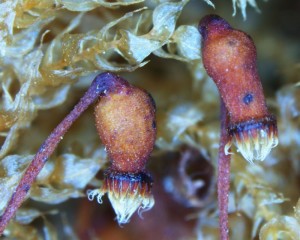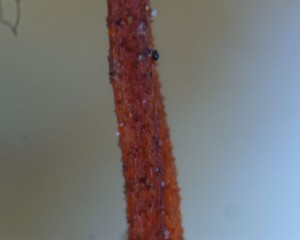Habitat
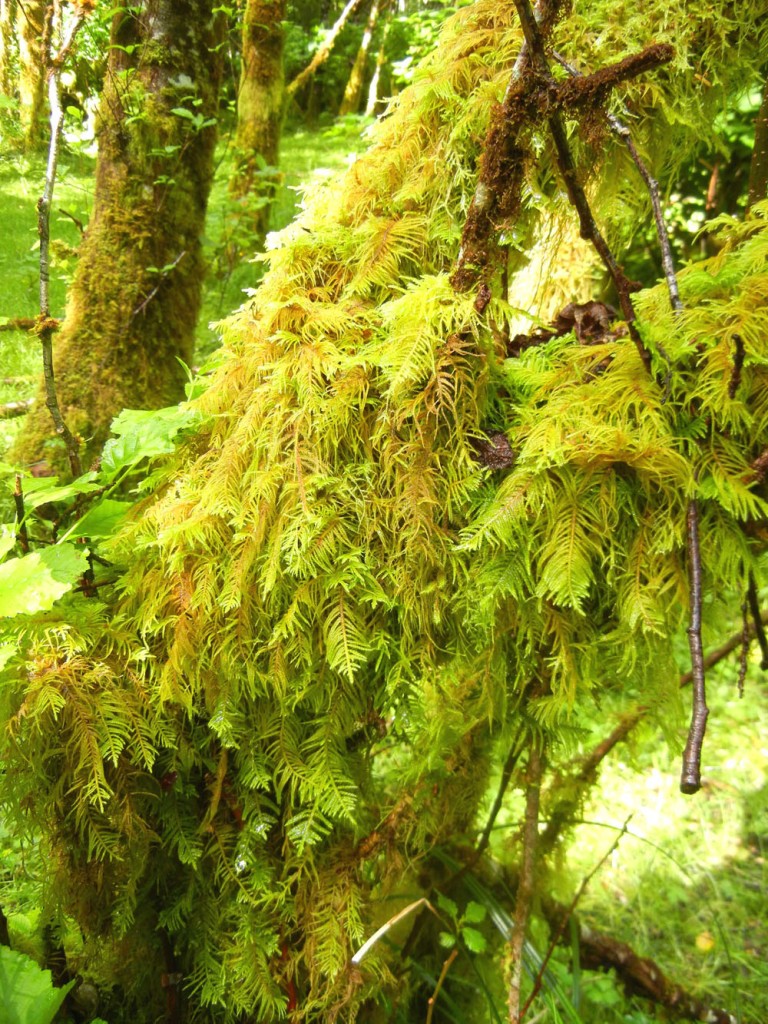
Kindbergia oregana (syn. Eurhynchium oreganum) is mainly a terrestrial species of humid lower elevation coniferous forests where in can be seen forming mats on humus, tree trunks, rotten logs and rocks.
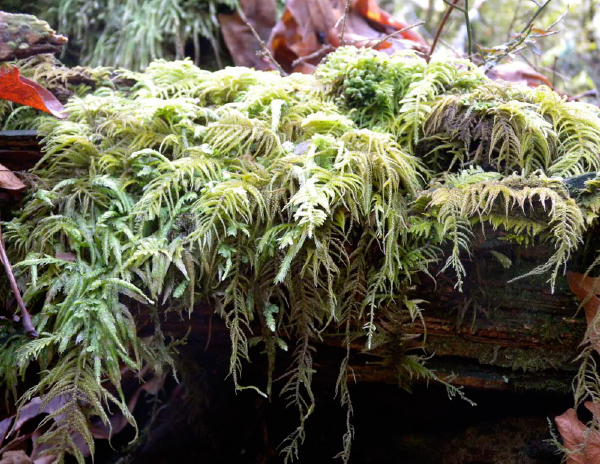
Gametophyte
Overall Structure:
Kindbergia oregana forms loose creeping mats of interwoven green shoots. It is pinnately-branched, with branches occurring in a single plane.
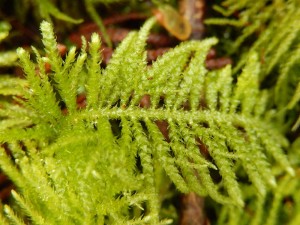
Kindbergia oregana and K. praelonga may sometimes be difficult to distinguish. However, K. oregana is typically a larger, “tidier” plant with more regularly-pinnate branching.
Leaf Structure:
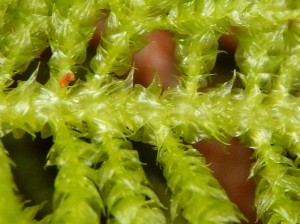
The leaves of the main stem differ from those of the branches. The stem leaves are also decurrent and squarrose, in contrast to the relatively narrow and weakly spreading branch leaves.
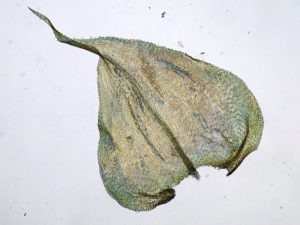
The leaves of the main stem (commonly referred to as stem leaves) of Kindbergia oregana are broadly-ovate in outline, tapering to narrowly-acute and sharply-pointed apices. Also note the single, strong costa that extends almost all the way to the leaf tips.
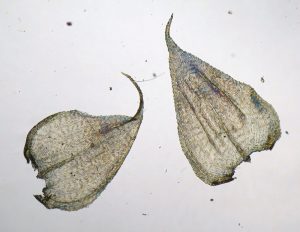
Branch leaves are less robust and are not squarrose in comparison with the leaves of the main stem.
The squarrose nature of the stem leaves is a useful feature to distinguish Kindbergia species from other similar-looking pleurocarpous mosses in the field.
Sporophyte
Sporophytes are red-brown when mature in the spring. The sporangium is ovoid in shape and capped with a beaked (rostrate) operculum.
Sporangium:
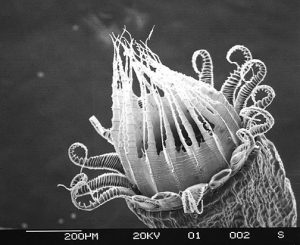
Scanning electron micrographs show the endostome (inner row peristome teeth) and the exostome (outer row of peristome teeth). The endostome acts as a filter to prevent all the spores from being released at once. The exostome is hygroscopic, moving in response to changes in humidity…in effect flicking spores. When it is wet the teeth close over the peristome to prevent spores from being released.
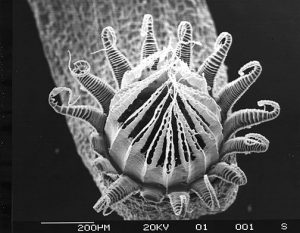
Seta:


